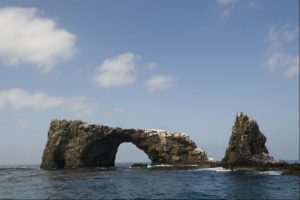The term refers to a legally-protected area of ocean water that preserves, restores and sustains that water and its biodiversity. The protections typically focus on overfishing that results in the destruction of critical species, such krill, and habitats, such as the Antarctic Ocean, but also on dumping of polluting materials into the ocean. Sanctuaries also have been used, since 1938, to protect whales by limiting or prohibiting whaling within certain defined areas.
To justify protection of ocean waters, it is necessary to develop and identify the credible and reliable science that supports the protections.

Oceans are bounded by a number of, and sometimes many, nations, and sometimes only an international effort can create such sanctuaries. On the international level, there is the Ocean Sanctuary Alliance which includes UN Member States and representatives of numerous disciplines involved in studies of oceans. It supports the creation of sanctuaries as part of the UN Sustainable Development Goals (SDGs), among them SDG 14: Conserve and sustainably use the oceans, seas and marine resources.
But there are also national and regional laws that allow for individual countries to establish Marine Protected Areas, or sanctuaries, in ocean waters adjacent to their shores and within their jurisdiction to control. For instance, in the United States the National Oceanic and Atmospheric Administration (NOAA) serves as the trustee for a network of underwater parks encompassing more than 600,000 square miles of marine and Great Lakes waters.
Some further ideas to explore on Ocean Sanctuaries:
Are there any ocean sanctuaries established by the country in which you live? If so, what organization created the sanctuary, and what activities within the sanctuary are controlled.
Should there be other activities that need to be controlled in the ocean sanctuary? For what purpose?
Determine how many ocean sanctuaries exist across the world. Pick one and identify the scientific, legal, economic and political issues that had to be addressed to create the sanctuary.
Sources:
Our Ocean, Commitments ourocean2016.org/commitments/
National Oceanic and Atmospheric Administration (NOAA), National Marine Sanctuary System sanctuaries.noaa.gov/
Ocean Sanctuary Alliance, Our Plan of Action www.oceansanctuaryalliance.org/
International Whaling Commission, Establishment of the International Whaling Commission’s sanctuaries bit.ly/2FukMAD


No comments yet, add your own below